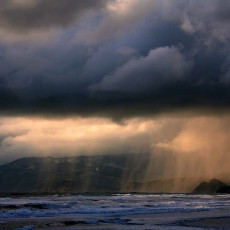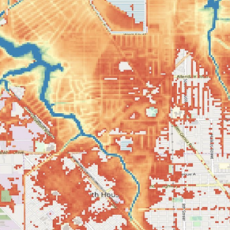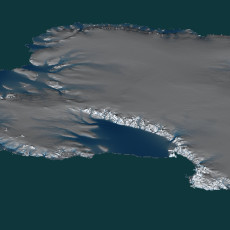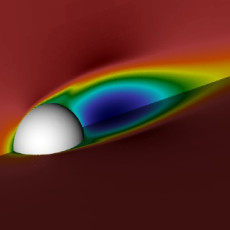Environmental
Berkeley Lab has been at the forefront of developing next-generation modeling capabilities for environmental science. The environmental systems we model are large, multiscale, multiphysics, geometrically complex, and often computationally intensive. These characteristics make them particularly amenable to the sophisticated mathematical and computational capabilities of Berkeley Lab. Environmental flows of interest include atmospheric and ocean flows, ice sheet modeling, and subsurface flow.
Projects
Ice Sheet Modeling:
BISICLES
BISICLES uses adaptive mesh refinement (AMR) to accurately and efficiently model the response of the Antarctic and Greenland Ice Sheets to changes in the Earth’s climate, which is a primary driver in projections of future sea level rise. Contact: Dan Martin (Martin on the Web)
SUHMO
The seasonal evolution of subglacial hydrology systems under glaciers like those in Greenland can impact the flow of the overlying ice via changes in the basal friction seen by the glacier. SUHMO uses AMR to resolve the dynamics of subglacial hydrology systems, enabling us to resolve the formation and closing of the networks of subglacial channels which drive the dynamics of these systems. Contact: Dan Martin (Martin on the Web)
SOFTBALL
The SOlidification, Flow, and Thermodynamics in Binary ALLoys (SOFTBALL) effort models sea ice formation processes (binary alloy formation) using adaptive mesh refinement to resolve dynamic brine channel formation. Contact: Dan Martin (Martin on the Web)
Subsurface Modeling:
Chombo-Crunch
Chombo-Crunch models subsurface porous-media reactive flow using adaptive mesh refinement (AMR 0and embedded boundaries to resolve pore-scale reactive flows in such media as fractured rock, concrete (with applications to carbon sequestration), and even applications like batteries. The ECP Subsurface project couples Chombo-Crunch and GEOSX to predict fracture evolution in subsurface formations, ultimately for the assessment of carbon sequestration sites. Contact: David Trebotich
TOUGH
TOUGH is a family of numerical simulation codes that are widely used to analyze multiphase processes that involve heat transfer effects and rock-fluid interactions. Contact: TOUGH User Support
Atmospheric Modeling:
Energy Research & Forecasting (ERF)
ERF models atmospheric flows at the mesoscale for the purpose of improving the fidelity of wind energy simulations. Contact: Ann Almgren
Ocean Modeling:
Lab researchers are participating in the SEAHORCE project for improving the representation of ocean and coastal processes in the global earth systems model E3SM. Contact: Hannah Klion
News

San Francisco and Berkeley Lab Team Up on Pioneering Climate Study
Berkeley Lab computational resources are helping the City and County of San Francisco adapt to the Bay Area's changing climate and the extreme storms it is expected to bring. Read More »

Study of Harvey Flooding Aids in Quantifying Climate Change
How much do the effects of climate change contribute to extreme weather events? A new study investigated the question for one particular element of one significant storm: Hurricane Harvey. Read More »

Limit Global Warming to 1.5°C and Halve the Land Ice Contribution to Sea Level this Century
A new study predicts that a major contributor to sea-level rise – melting land ice – could be halved this century (from today to 2100) if we meet the Paris Agreement target of limiting global warming to 1.5°C. This work combines nearly 900 simulations, including some of Berkeley Lab Computational Scientist Dan Martin's BISICLES models of Antarctic ice sheets. Read More »

Chombo-Crunch Sinks Its Teeth into Fluid Dynamics
Berkeley Lab scientists are breaking new ground in the modeling of complex flows in energy and oil and gas applications, thanks to a computational fluid dynamics and transport code dubbed “Chombo-Crunch.” Read More »







 Instagram
Instagram YouTube
YouTube